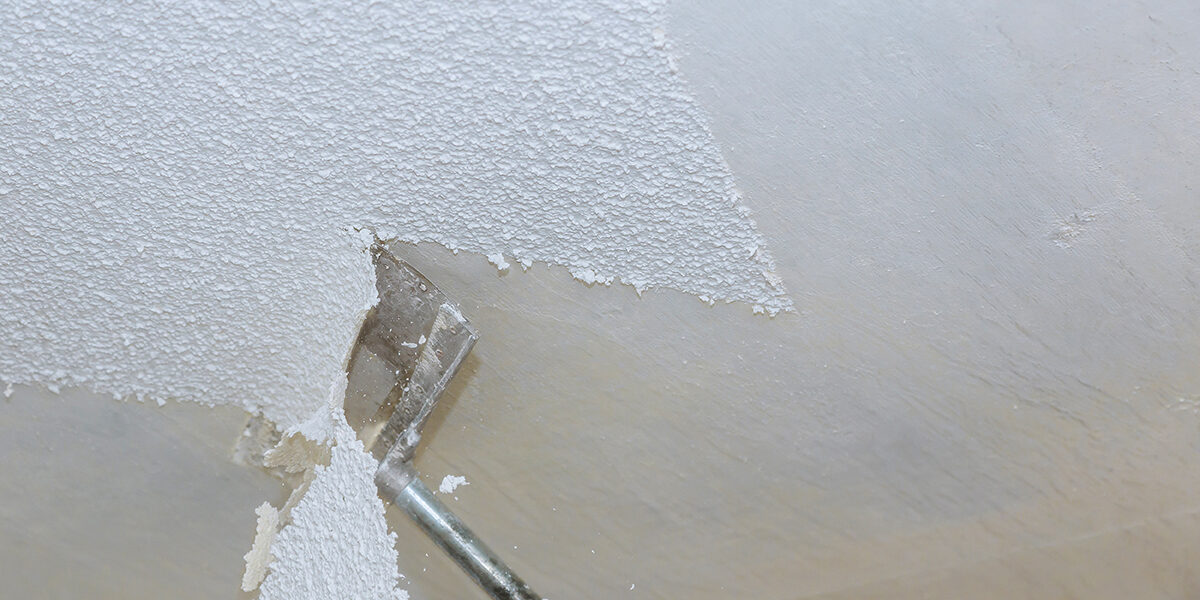This article is written to help the courageous DIY warrior to remove texture from ceilings without having the professional equipment we use to do the work. We have a powerful dustless sander that is quick, efficient, and clean, but is also very expensive. Although DIY removal of a textured ceiling can be a messy and labor-intensive process, the following steps can be followed to remove a textured ceiling:
- Prepare the room: Cover the floor with drop cloths or plastic sheeting to catch falling debris. Remove any furniture or items from the room that could be damaged during the removal process. Turn off the power to the room by turning off the circuit breaker or removing the fuse.
- Identify the type of texture: There are several types of textured ceilings, including popcorn, knockdown, stamped, and orange peel. Knowing the type of texture will help you determine the best way to remove it.
- Remove any fixtures: Light fixtures, ceiling fans, and vent covers should be removed before starting the textured ceiling removal process.
- Create small holes: Using a putty knife or drywall saw, create small holes in the textured ceiling. This will help you to identify the type of texture, and also allows you to remove the texture in small sections.
- Scrape the texture: Use a scraper or a putty knife to remove the texture from the ceiling. Be careful not to damage the drywall underneath. Wetting the texture with water in a spray bottle or garden sprayer will make it easier to scrape off, but it also make the job more messy.
- Vacuum the debris: Use a vacuum or broom and dustpan to remove the debris from the floor. Be sure to empty the debris into a sealed trash bag to prevent the release of dust in the air.
- Repeat the process: Continue the process of creating small holes, scraping, and vacuuming until the entire textured ceiling is removed.
- Sand the ceiling: Once all the texture is removed, use a fine-grit sandpaper to smooth the surface of the drywall.
- Skim the ceiling: Skim the entire ceiling with drywall mud to achieve the smooth surface you desire. Sand in between coats until you have the look you want. This will prepare the surface for priming and painting or applying a new texture.
It’s important to note that some types of texture, such as popcorn texture, may contain asbestos, which can be a health hazard if inhaled. If your textured ceiling is more than 30 years old, it’s recommended to have it tested for asbestos before removing it. If it has asbestos, wear protective clothing and a full respirator set up.
My Three Sons Professional Painting & Remodeling is your Textured Ceiling Removal specialist in Lexington. Please give us a call at 859-321-7344 to give you a free estimate on your project.








